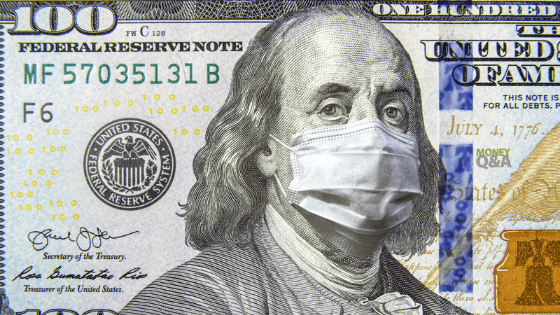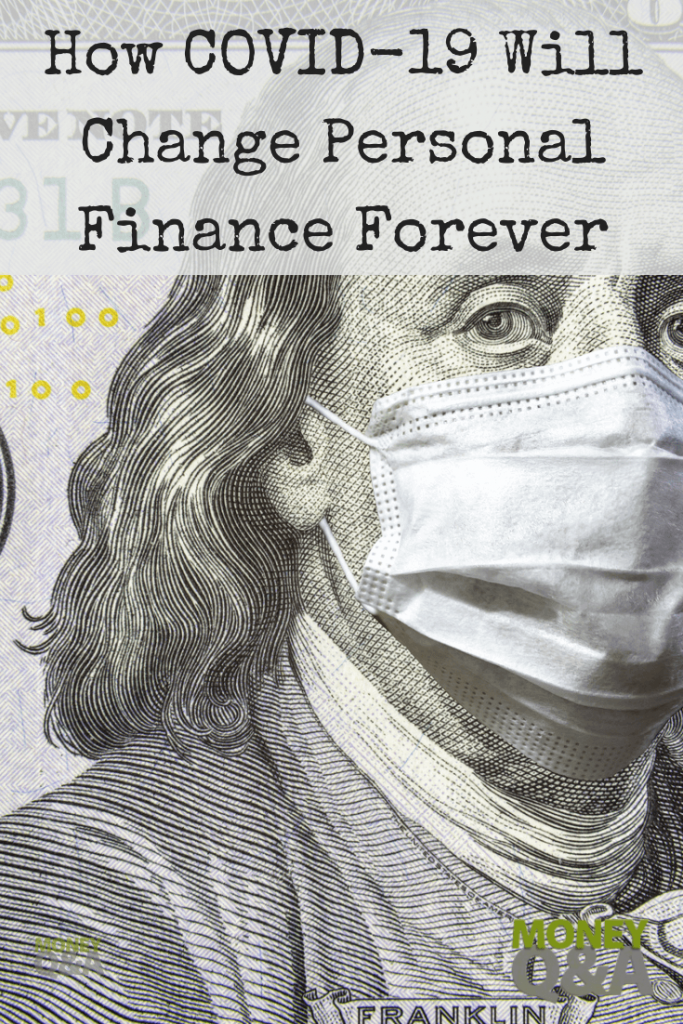
When Covid-19 first hit the U.S. in the spring of 2020, we witnessed one of the largest and fastest unemployment spikes in American history. While the stock market has rebounded to all-time highs during the pandemic, Main Street has been spiraling downward. Covid will change personal finance.
The Center on Budget and Policy Priorities estimated that 11% of adults in the U.S. didn’t have enough to eat over the past 7 days (compared to 3.4% of adults who reported insufficient access to food over the course of 12 whole months before the pandemic). The CBPP data from January 2021 also showed that 21% of adults were behind on rent, and 35% had reportedly struggled to pay for typical household expenses over the past 7 days.
These abysmal statistics demonstrate that the old personal finance advice for maintaining 3-6 months’ worth of expenses in an emergency savings fund may be insufficient to cover unexpected economic hardship in the future adequately. We’re just beginning to understand the true extent of the financial fallout of the pandemic, but for now, one thing is certain: personal finance as we knew Covid-19 will forever change personal finance.
Going Cashless
To avoid human-to-human touch as much as possible – and save change during a national coin shortage – countless retailers, restaurants, and other consumer-facing businesses have been increasingly switching to cashless payment systems during the pandemic. This has included tap-to-pay features associated with payment information stored in smartphones and smartwatches, greater emphasis on online ordering and curbside pickup, and virtual tipping for gig workers, performers, and restaurant staff.
While Massachusetts, Rhode Island, and New Jersey have state laws requiring merchants to accept cash, people in other states who want to use cash may be out of luck with many retailers. Long-term, these companies are unlikely to get rid of their sleek new cashless payment systems, which may lead to a greater emphasis on credit card use even after Covid-19.
Bigger Emergency Savings
As we’ve seen from the pandemic so far, having even six full months’ worth of expenses in emergency savings may be inadequate in times of genuine crisis. There have been far too many tragic stories of people racking up tens of thousands of dollars in credit card debt to stay afloat while awaiting their unemployment checks (sometimes as long as 9-10 months or more).
To prevent further financial devastation, some states implemented eviction moratoriums to shield financially vulnerable tenants from homelessness. The FDIC recommended that banks, credit unions, and credit card companies work with borrowers to provide flexible repayment options. However, these policies are intended to be temporary, which means that consumers should focus their long-term goals on building an even bigger rainy day fund than they previously assumed they needed before the pandemic.
Tax Deductions for Work-from-Home Employees?
While the Tax Cuts and Jobs Act of 2017 increased the standard deduction, it also eliminated tax deductions for employee office supplies and other expenses you might’ve incurred while working from home during Covid-19. If you’re classified as an independent contractor, many of these expenses may be tax write-offs, but workers classified as employees may be out of luck, even if your employer didn’t reimburse you for the expenses.
Long-term, there’s a chance Congress may pass legislation bringing back tax deductions for work-from-home employees. For the time being, however, you should talk to your employer about reimbursement opportunities because current IRS regulations won’t allow for it.
Relocating for Lower Living Expenses
According to a July 2020 Pew Research Center analysis, 22% of U.S. adults either relocated, had someone move into their household, or know someone who moved during the pandemic. Urban centers like San Francisco and New York City witnessed thousands of individuals and families fleeing for less-populous suburban and rural areas, where living costs tend to be lower (especially rent/mortgage payments).
With more and more companies deciding to let their employees work remotely long-term, a post-pandemic world will likely see more people permanently leaving high-cost urban areas for more affordable locales.
The Future of Student Loans
Student loans backed by the Department of Education have been in “Covid Forbearance” since March 20, 2020, and will remain that way until at least September 20, 2021. This means that most public student loans are not currently accruing interest, nor are any payments due for quite some time. For borrowers still employed during Covid, this has been a good opportunity to chip away at their student loan debts. Every payment made during this time goes directly towards the principal (after the remaining interest is paid off first).
Long-term, the Biden Administration is reportedly considering canceling some student loan debt altogether – though the exact figure per borrower has varied widely from $10,000 to $50,000 – which suggests that millions of borrowers could eventually become debt-free. Of course, this proposal is still very much under consideration and shouldn’t be viewed as a viable solution until more concrete proposals are announced and put to the vote in Congress.
The “new normal” we’ve been operating in for the past year has changed millions of lives, and it will continue influencing our approach to personal finance in the years to come. While the pandemic is temporary, it’s nevertheless an important reminder to “plan for the worst, hope for the best” regarding financial management.

